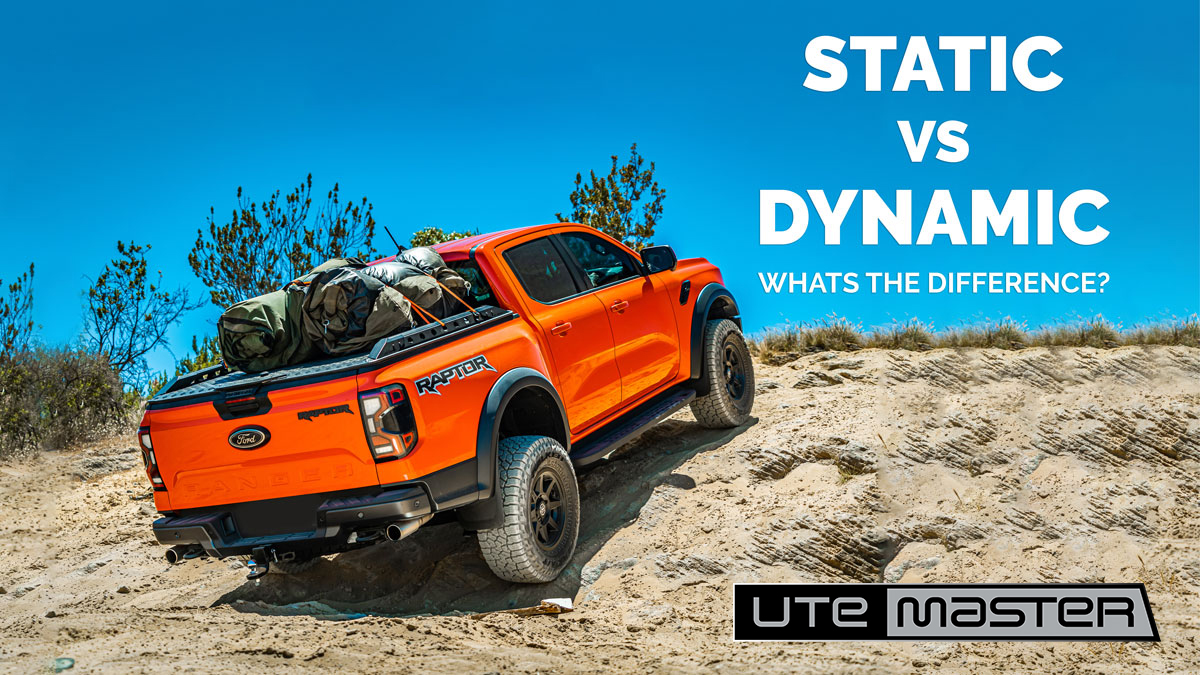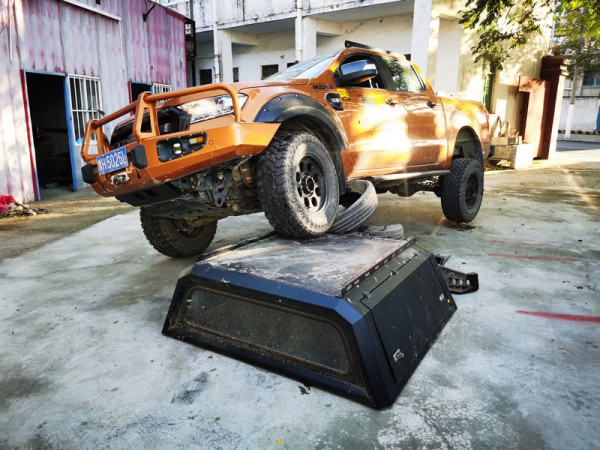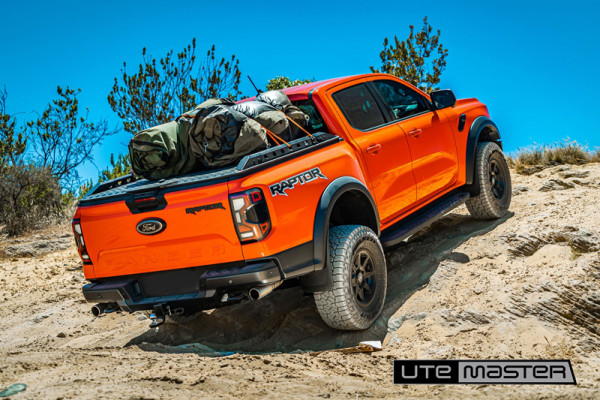Static vs dynamic load capacity
Posted on 17 February 2023 by Utemaster

When purchasing a Ute Canopy or Tub Hard Lid it is crucial for your safety to know the difference between the Dynamic and Static Load Capacity.
Many companies will only display a static load capacity, this is because they have not gone through the process to test the product to an official standard and calculate the dynamic load rating.
In the below article we review the key differences between static and dynamic load ratings and take a look at how they are calculated.
What is Static Load Capacity?
The static load capacity is the maximum recommended load which can be applied while the vehicle is stationary. For example a parked vehicle with a Roof Top Tent and people inside could weigh up to 300kg. Static load rating assumes that the product is able to support this, but it does not indicate that the same weight can be carried while the vehicle is moving either onroad or offroad.
How is Static Load Capacity calculated?
Static load capacity testing involves subjecting a structure to the maximum weight it can bear when stationary. The objective is to assess the Canopy or Hard Lids load-bearing capability by determining the weight limit before there is any visible damage to the product or supporting tub.
Photo source Ozi 4x4.

What is Dynamic Load Capacity?
A dynamic load capacity refers to the maximum weight that can be supported by a structure when it is subjected to movement, such as when a vehicle is driving. This rating will normally be lower than a static load capacity because the amount of force applied when doing so is far greater than when the vehicle is stationary.
How is Dynamic Load Rating calculated?
Dynamic load rating is calculated by putting the product in a simulated environment and subjecting it to a series of formulated tests that represent real life examples.
Utemaster have a special rig that replicates the vibrations of traveling on rugged roads, this means it has been tested past the warranty period of the vehicle. The result is a whole new level of performance and driver comfort.
Although a certain canopy may be able to handle a heavy weight to transport something down the road, this doesn't represent a load rating.
Typically the Dynamic rating will test the product until failure, and then determine the weight rating from there, using a factor of up to 4x. Unlike a static rating, this means that you can have complete confidence that your goods will be safe on the roads.
To achieve a dynamic load rating testing and calculations are used to determine that the product is able to withstand the following scenarios:
Shake: How long will the product last in an offroad scenario with a load on top?
Wind: Can the product last if the load gets caught by the wind (ever seen someone driving with a mattress or sheet of plywood catching the wind like a sail?)
Sudden Braking: This tests how well the product can hold onto it's load in the event of the vehicle suddenly coming to a halt.

Some companies only choose to display a static load rating for their products, however Utemaster put all their products through dynamic load rating tests.
This provides buyers with confidence that the weight capacity recommendations are safe, verified and can be trusted in both stationary and driving environments.
To find out more about these products, head to the links below:
Please Note: The way the force affects either the lid or canopy would vary depending on whether it was distributed evenly or if the weight was exerted on 1 small area or corner.